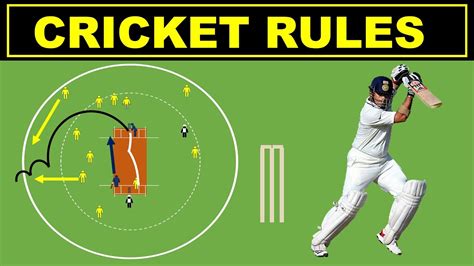Discover essential steps to establish a local cricket association, including community support, leadership, legal requirements, and strategies for sustainable growth and engagement.Cricket is more than just a game; it’s a vibrant community activity that brings people together. Forming a local cricket association can be a rewarding endeavor, not only for enthusiasts of the sport but for the entire community. This step-by-step guide outlines the essential process of establishing a local cricket association, from understanding its significance to navigating legal requirements. Whether you’re a seasoned player or a passionate supporter, this article will provide valuable insights on how to rally interest, create an effective charter, and build a strong leadership team. Plus, we’ll cover strategies for promoting your association to ensure its long-term success and engagement. Dive in to learn how you can foster a thriving cricket culture in your area!
Understanding The Importance Of A Local Cricket Association
Establishing a local cricket association is crucial for fostering a vibrant cricket culture within your community. Such associations serve as the backbone of the sport, providing structure, resources, and opportunities for players, coaches, and enthusiasts alike.
One of the primary benefits of a local cricket association guide is community engagement. By bringing people together and organizing events, leagues, and training sessions, these associations create a sense of belonging and teamwork, which is essential for the growth of cricket at the grassroots level.
Additionally, local cricket associations play a vital role in talent identification and development. They provide a platform for aspiring cricketers to showcase their skills and receive proper coaching and mentorship. This not only helps in honing their abilities but also encourages younger generations to take up the sport seriously.
Moreover, having a local cricket association can significantly enhance the resources available to clubs and players. Associations often facilitate access to better facilities, equipment, and funding, essentially leveling the playing field for less established clubs. This leads to greater competition and overall improvements within the local cricketing landscape.
A well-structured association fosters collaboration with schools, local businesses, and government bodies, leading to a more extensive support system. This is vital for the sustainability of cricket initiatives and ensures that the sport receives recognition and funding, ultimately enhancing its profile in the community.
Essential Steps To Gather Community Interest And Support
Building a local cricket association is not just about organizing matches; it’s about creating a vibrant community that brings people together through the love for the game. Here are the essential steps to generate interest and support from your local community:
- Engage with Local Schools and Youth Clubs: Partnering with schools and youth clubs can help you reach out to young cricket enthusiasts. Organize introductory cricket sessions or workshops to ignite interest.
- Arrange Local Cricket Events: Host friendly matches, tournaments, or cricket clinics open to the community. These events can showcase the game and highlight the benefits of joining a local cricket association.
- Create Social Media Presence: Establish strong social media channels dedicated to your local cricket association. Regularly post updates, event information, video highlights, and player spotlights to engage the community.
- Leverage Local Media: Engage with local newspapers, radio stations, and online community boards to announce your intent to form a local cricket association. Share success stories from cricket events to attract more interest.
- Organize Community Meetings: Hosting open forums or community meetings allows you to explain the vision of the local cricket association. Solicit input and feedback to ensure the community feels involved in the process.
- Distribute Flyers and Promotional Material: Create eye-catching flyers and posters to distribute in local parks, schools, and community centers. This traditional approach can effectively reach those not active on social media.
- Build Partnerships with Local Businesses: Collaborate with local businesses to sponsor events or provide resources. This not only helps in funding but also builds a network of support within the community.
- Encourage Volunteer Participation: Mobilize volunteers for events or training sessions. Getting community members involved will foster a sense of belonging and ownership towards the local cricket association.
- Showcase the Benefits: Clearly communicate the benefits of joining the local cricket association, such as physical fitness, social interaction, teamwork, and personal development opportunities.
- Follow Up: After initial outreach efforts, follow up with interested parties. Keep them informed about the progress of forming the association and upcoming events to maintain their interest.
Following these steps will greatly enhance the chances of forming a successful local cricket association guide that thrives through active support from the community.
How To Formulate A Clear Association Charter
Creating a clear and comprehensive charter is a pivotal step in the establishment of your local cricket association guide. This document serves as the foundational framework for your organization, outlining its purpose, structure, and operational guidelines. Here are the essential components to include when formulating your association charter:
| Section | Description |
|---|---|
| Association Name | The official name of your cricket association, ensuring it is unique and reflective of your local area. |
| Mission Statement | A concise statement that defines the core purpose of the association and its commitment to promoting cricket in the community. |
| Objectives | Clear, measurable goals the association aims to achieve, such as organizing local matches, promoting youth participation, or hosting training sessions. |
| Membership Structure | Details about different membership categories, eligibility criteria, and the application process. |
| Leadership Roles | Define the roles and responsibilities of various leadership positions, including how they will be elected or appointed. |
| Meetings | Guidelines on how often meetings will occur, the quorum required for decision-making, and procedures for calling special meetings. |
| Financial Management | Outline how funds will be managed, including budgeting, reporting, and procedures for financial audits. |
| Amendment Process | Instructions for how amendments can be proposed and adopted in the charter, ensuring adaptability for future developments. |
By ensuring that each of these components is thoughtfully addressed, your local cricket association guide will lay a strong foundation for the growth and sustainability of your cricketing community. Remember, clarity and transparency are vital to encouraging participation and building trust among members.
Building A Strong Leadership Team For The Association
Creating a strong leadership team is a vital part of your local cricket association guide. A dedicated group of leaders will not only inspire passion among other members but also ensure effective management and decision-making processes. Here are key strategies to build an effective leadership team:
1. Identify Key Roles and Responsibilities
Begin by defining the essential roles needed within your association, such as President, Secretary, Treasurer, and various committee heads. Clearly outlining these roles will help you identify potential leaders who can take charge and inspire others.
2. Recruit Community Members
Look within your local cricket community for individuals who have the skills, experience, and dedication required for leadership. Engage with past players, coaches, and enthusiasts to form a diverse team that can cater to different perspectives and expertise.
3. Foster Open Communication
Encourage transparency through regular meetings and open forums. This will allow members to share ideas, voice concerns, and collaborate on initiatives, ultimately enhancing team cohesion.
4. Provide Training and Development
Invest in leadership training and development for your team. Workshops or mentorship programs can enhance their skills, ensuring they are well-equipped to fulfill their responsibilities effectively.
5. Promote a Positive Culture
Focus on building a positive, inclusive culture within your leadership team. Foster mutual respect, camaraderie, and a sense of shared purpose. Celebrate successes together and learn from challenges collectively.
6. Set Clear Goals
Establish short-term and long-term goals for the association. Leadership teams that have a clear vision and set objectives are more likely to stay focused and motivated, leading to successful outcomes.
7. Evaluate Performance Regularly
Implement a system for regular feedback and evaluation of your leadership team’s performance. This will help in recognizing achievements and identifying areas for improvement, ensuring the ongoing effectiveness of your local cricket association guide.
By focusing on these strategies, you can build a strong and dynamic leadership team that will serve as the backbone of your local cricket association, driving engagement and ensuring long-term success.
Local Cricket Association Guide: Registration And Legal Requirements
Forming a local cricket association involves navigating various registration and legal requirements that are essential for a successful establishment. By adhering to these regulations, you ensure that your association operates within the law and is recognized by relevant authorities. Here’s a comprehensive outline to guide you through this process.
1. Choose a Legal Structure
The first step in your local cricket association guide is deciding on a suitable legal structure. Common options include:
- Non-profit Organization: Ideal for associations that focus on community engagement and sports development.
- Club or Association: This allows for more flexibility in operations and can facilitate partnerships with private entities.
2. Register Your Association
Once you have chosen a structure, the next step is to register your association with the appropriate government authority. This usually involves submitting documents such as:
- Association name and objectives
- Member list and founding documents
- Bylaws and governance structure
3. Obtain Necessary Licenses and Permits
You might need specific licenses and permits depending on your region. This could include:
- A sports organization permit
- Insurance policies for events and activities
4. Open a Bank Account
Establishing a bank account for your local cricket association is crucial for transparent financial management. This account will handle membership fees, donations, and expenditures associated with the association.
5. Comply with Tax Regulations
Understand the tax implications for your association. You may be eligible for tax exemptions as a non-profit, but it’s essential to maintain proper records and comply with any regulations that apply.
Following these essential steps will lay a solid foundation for your local cricket association, ensuring it is legally compliant and ready to serve the community effectively. By incorporating these guidelines into your planning, you can create a sustainable and vibrant cricketing environment.
Promoting The Association For Sustainable Growth And Engagement
Once your local cricket association is established, the next crucial step is to ensure its growth and sustained engagement within the community. Effective promotion not only attracts new members but also retains current ones, fostering a sense of pride and belonging within the association. Here are some strategies to promote your local cricket association:
- Utilize Social Media: Create dedicated social media profiles for your association on platforms like Facebook, Twitter, and Instagram. Share updates, match results, player highlights, and event announcements to engage followers and attract new ones.
- Organize Community Events: Host events such as open days, cricket clinics, and friendly matches to invite locals to experience the sport firsthand. These activities can create excitement and build connections within the community.
- Collaborate with Local Schools: Partner with schools to introduce cricket programs or after-school clubs. This can generate interest among young players and encourage families to get involved with your association.
- Leverage Local Media: Reach out to local newspapers, radio stations, and blogs to cover your events and share success stories. Building a relationship with local media can help raise awareness and promote your activities.
- Develop Informative Materials: Create brochures, flyers, and a newsletter that detail your association’s mission, upcoming events, and how to join. Distributing these materials in community centers, libraries, and local businesses can increase visibility.
- Offer Referral Incentives: Encourage current members to bring in new players by offering incentives, such as discounts on membership fees or special recognition within the association.
- Engage with Local Businesses: Form partnerships with local businesses to sponsor events or teams. This can help cover costs while providing exposure to your association.
- Encourage Volunteer Support: Build a robust volunteer network to support events, coaching, and administrative tasks. Volunteers can be powerful advocates for your association, enhancing community ties.
By implementing these promotional strategies, you can ensure the sustainability and growth of your local cricket association guide. Engaging with the community, creating awareness, and fostering enthusiasm are key components in establishing a thriving cricket culture that benefits everyone involved. Regular evaluation of your promotional efforts will also help refine your approach and enhance engagement over time.
Frequently Asked Questions
What are the initial steps to forming a local cricket association?
The initial steps include researching existing cricket associations, gathering interested players and volunteers, and defining the mission and objectives of your association.
How can I ensure support from the community for the cricket association?
Engage with local schools, community centers, and sports clubs to promote cricket, host events to raise awareness, and seek partnerships with local businesses for sponsorship.
What legal requirements should I consider when forming a cricket association?
You will need to register your association as a legal entity, get necessary permits, and ensure compliance with local sports governing bodies and regulations.
What should be included in the by-laws of the cricket association?
By-laws should include the association’s purpose, membership requirements, governance structure, roles and responsibilities of officers, and procedures for meetings and decision-making.
How can we promote inclusivity within the cricket association?
Promote inclusivity by encouraging participation from diverse groups, providing equal opportunities for all, and creating programs tailored for different age and skill levels.
What are effective ways to raise funds for the cricket association?
You can raise funds through membership fees, sponsorship deals, hosting tournaments, and organizing fundraising events such as community cricket matches.
How can we ensure the sustainability of our cricket association?
To ensure sustainability, focus on building a strong membership base, developing youth programs, fostering community involvement, and establishing reliable funding sources.









